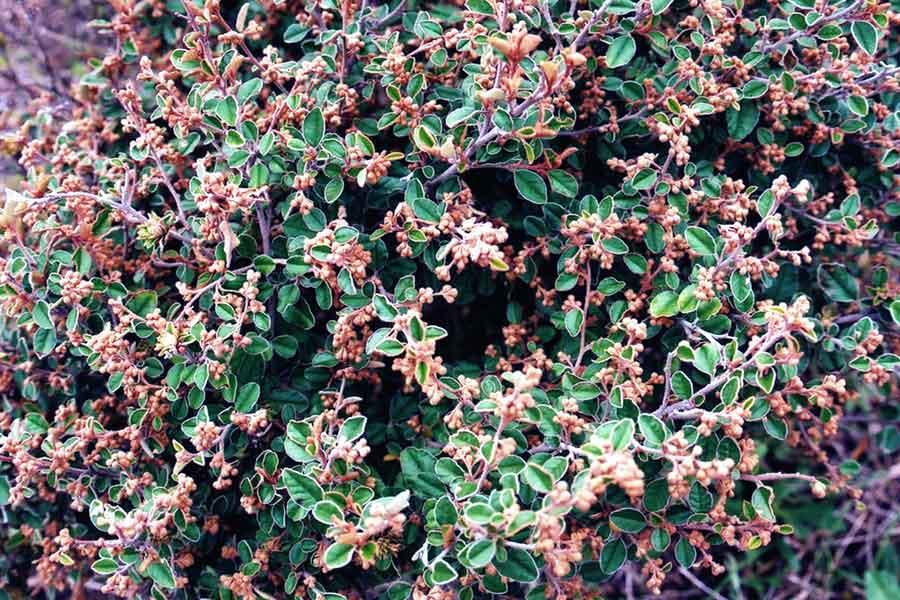VEGETATION
The alteration of Hallett Cove’s vegetation began in the early days of South Australian settlement.
In the 1840s, surrounding areas were logged to feed the boilers at the nearby copper mines. When the mines closed, agriculture and grazing activities spread into the area and eventually only vegetation on the poorest and shallowest soils or steepest slopes remained intact and undamaged.
Car ownership brought beach usage and holiday shacks to the coast, and this in turn led to further strains on vegetation and the introduction of various exotic garden species.
By the time the Park was proclaimed in 1976, the upper slopes of the Amphitheatre and the coastal cliff tops were the only areas where remnant vegetation remained.
Since then revegetation has been ongoing, initially using only the Park’s indigenous plant species and more recently local provenance species as a seed source.
The wide variety of soil layers and types throughout the park has caused a number of different plant communities to evolve. They are broadly represented as coastal dunes, coastal heath and grassy woodlands.

32 grass species have been identified and occur across the Park in different communities.
50 of the Park’s indigenous plant species have regional conservation significance and the aim is to protect and extend their status within the Park.
A revegetation and weed control program has addressed the widespread degradation and removal of original vegetation.
The Friends have adopted ‘bushcare’ methods in conjunction with a planting program:
- Removal of invasive woody weeds, such as olives and African boxthorn, and feral garden escapees is ongoing.
- Revegetation throughout the Park, including reconstruction of the woodland, which formerly covered the inland area, is ongoing.
- Up to 2020 approximately 35,000 plants have been planted across the Park, and considerable growth has occurred from direct seeding by the group.
- Of the Park’s 200 indigenous plant species, about 50 have been successfully included in the program.
Prominent plants in the vegetation zones include:
Sandy slopes
Kunzea pomifera, Myoporum insulare, Lepidosperma spp., Dianella revoluta, D. Longifolia and Kennediaprostrata.
Exposed heath
Found on the hillsides, typically sitting in heavier clays, includes: Beyeria lechanaultii, Westringia rigida, Pomaderris paniculosa, Eutaxia mycrophylla, Grevillia lavendulacea, Alyxia buxafolia, Gahnia lanigera, Lomandra effusa, and many different flowering herbs and bulbs in early spring.
Protected gullies
Melaleuca lanceolata, Pittosporum phylliraeoides, Myoporum insulare and Allocasuarina verticillata.
Grassy woodlands
Initially revegetated with an upper storey vegetation, including various eucalypts (although Eucalyptus porosa is the correct species). Acacia pycnantha, A. ligulata, Allocasuarina verticillata, Melaleuca lanceolata, and Pittosporum phylliraeoides now have an understorey of Dianella revoluta and Acrotriche patula, as well as a variety of saltbushes.
Further reading
Kraehenbuehl, D.N. (1996): Pre-European Vegetation of Adelaide: a survey from the Gawler river to Hallett Cove, https://catalogue.nla.gov.au/Record/1474359, Adelaide.
Turner, M. (2001): Conserving Adelaide’s Biodiversity, Urban Forest Biodiversity Program.
Hallett Cove Conservation Park Management Plan (Amended 2017), Management Plan 2017, Adelaide.
SA Govt for Environment and Heritage 6 April 2004,
https://www.environment.sa.gov.au/files/sharedassets/parks/parks/adelaide/hallett-cove-conservation-park/hallett_cove_cp_family.pdf
Australasian Systematic Botany Society Inc, ASBS Newsletter Book Review by Mike Crisp, 10 March 2010,
http://www.asbs.org.au/asbs/newsletter/book-review-93a.html
